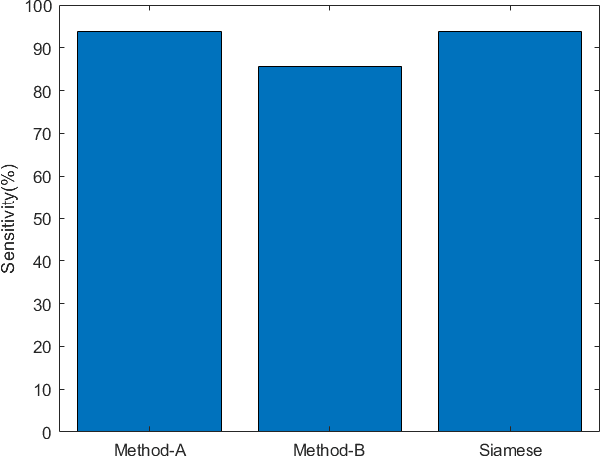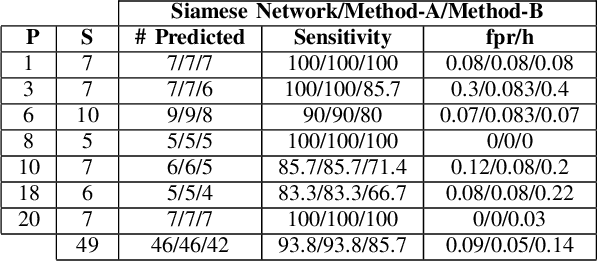Lara Marcuse
Patient-Specific Seizure Prediction Using Single Seizure Electroencephalography Recording
Nov 14, 2020


Abstract:Electroencephalogram (EEG) is a prominent way to measure the brain activity for studying epilepsy, thereby helping in predicting seizures. Seizure prediction is an active research area with many deep learning based approaches dominating the recent literature for solving this problem. But these models require a considerable number of patient-specific seizures to be recorded for extracting the preictal and interictal EEG data for training a classifier. The increase in sensitivity and specificity for seizure prediction using the machine learning models is noteworthy. However, the need for a significant number of patient-specific seizures and periodic retraining of the model because of non-stationary EEG creates difficulties for designing practical device for a patient. To mitigate this process, we propose a Siamese neural network based seizure prediction method that takes a wavelet transformed EEG tensor as an input with convolutional neural network (CNN) as the base network for detecting change-points in EEG. Compared to the solutions in the literature, which utilize days of EEG recordings, our method only needs one seizure for training which translates to less than ten minutes of preictal and interictal data while still getting comparable results to models which utilize multiple seizures for seizure prediction.
Deep density ratio estimation for change point detection
May 23, 2019



Abstract:In this work, we propose new objective functions to train deep neural network based density ratio estimators and apply it to a change point detection problem. Existing methods use linear combinations of kernels to approximate the density ratio function by solving a convex constrained minimization problem. Approximating the density ratio function using a deep neural network requires defining a suitable objective function to optimize. We formulate and compare objective functions that can be minimized using gradient descent and show that the network can effectively learn to approximate the density ratio function. Using our deep density ratio estimation objective function results in better performance on a seizure detection task than other (kernel and neural network based) density ratio estimation methods and other window-based change point detection algorithms. We also show that the method can still support other neural network architectures, such as convolutional networks.
Focal onset seizure prediction using convolutional networks
May 29, 2018



Abstract:Objective: This work investigates the hypothesis that focal seizures can be predicted using scalp electroencephalogram (EEG) data. Our first aim is to learn features that distinguish between the interictal and preictal regions. The second aim is to define a prediction horizon in which the prediction is as accurate and as early as possible, clearly two competing objectives. Methods: Convolutional filters on the wavelet transformation of the EEG signal are used to define and learn quantitative signatures for each period: interictal, preictal, and ictal. The optimal seizure prediction horizon is also learned from the data as opposed to making an a priori assumption. Results: Computational solutions to the optimization problem indicate a ten-minute seizure prediction horizon. This result is verified by measuring Kullback-Leibler divergence on the distributions of the automatically extracted features. Conclusion: The results on the EEG database of 204 recordings demonstrate that (i) the preictal phase transition occurs approximately ten minutes before seizure onset, and (ii) the prediction results on the test set are promising, with a sensitivity of 87.8% and a low false prediction rate of 0.142 FP/h. Our results significantly outperform a random predictor and other seizure prediction algorithms. Significance: We demonstrate that a robust set of features can be learned from scalp EEG that characterize the preictal state of focal seizures.
* 8 pages, 6 figures, 3 tables
 Add to Chrome
Add to Chrome Add to Firefox
Add to Firefox Add to Edge
Add to Edge